Traditional advertising no longer captures the audience’s attention as effectively as once. Today, people crave real stories and authentic experiences—content that resonates with them and builds trust. This is where User-Generated Content (UGC) platforms come into play, providing brands with a structured approach to harnessing the power of social proof.
What is a User-Generated Content (UGC) Platform?
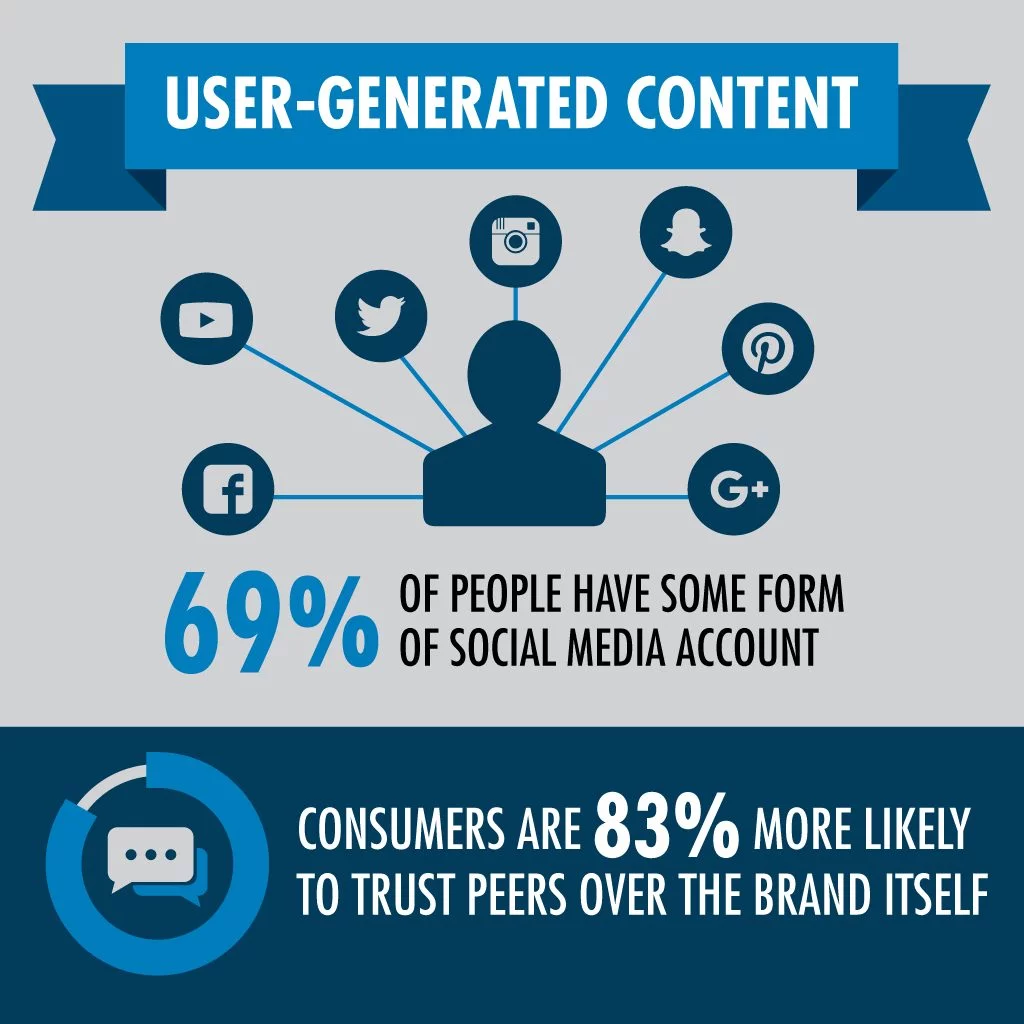
A User-Generated Content (UGC) platform is a space where real individuals, not brands, share their online experiences. Imagine someone tweeting about their love for a new coffee machine or showcasing their new cowboy boots on Instagram. That’s UGC in action! 🤳
User-generated content includes social media posts, product reviews, and more.
Benefits of User Generated Content Platforms:
- Understanding Customers: UGC platforms provide valuable insights into customers’ thoughts and preferences. By analyzing the content that customers share about your products or services, brands can better understand what resonates with their audience. This authentic feedback helps tailor products, services, and marketing strategies to meet the customer needs and expectations.
- SEO and Online Visibility: With 74% of consumers relying on social media for purchasing decisions (Sprout Social), UGC plays a crucial role in enhancing online visibility and improving SEO. Search engines favor fresh, relevant content, and UGC offers a constant stream of such material. User-generated posts, reviews, and social media interactions increase keyword diversity and generate backlinks, essential for higher search engine rankings. This improved visibility drives organic traffic to the website.
- Cost Savings: Leveraging UGC allows brands to save significantly on content creation costs. Rather than investing heavily in professional content creation, brands can use authentic and relatable content their customers generate. This reduces expenses and produces content that potential customers find more trustworthy and engaging. The genuine nature of UGC often resonates more effectively with audiences than brand-created content.
- Avoiding Unfollows: Over-promotion is a common reason for 45% of users to unfollow brands (BuzzStream). UGC offers a compelling alternative by providing content that is less promotional and more authentic. By showcasing real customer experiences and stories, brands can maintain a balanced and engaging social media presence. This approach reduces the risk of alienating followers with excessive promotional content, helping retain and grow the audience.
- Longer Website Visits: Websites featuring UGC experience prolonged visitor engagement, creating a more immersive online experience. When visitors see real customer reviews, photos, and videos, they are more likely to spend time exploring the content. This increased engagement leads to higher conversion rates as visitors feel more informed and confident about their purchase decisions. The presence of UGC also enhances the overall user experience, making the website more dynamic and interactive.
- Spotting Trends: UGC platforms enable brands to swiftly identify emerging trends based on customer discussions and usage patterns. By monitoring customers’ content, brands can stay ahead of market trends and consumer preferences. This real-time insight allows for quicker adaptation to changing market conditions, enabling brands to capitalize on new opportunities and avoid potential pitfalls.
- Customer Loyalty: 90% of consumers highly value the authenticity of UGC (Stackla), which fosters customer loyalty. When customers see genuine content created by their peers, it builds trust and strengthens their emotional connection to the brand. This sense of community and shared experience encourages repeat purchases and long-term loyalty. By continually engaging customers through UGC, brands can cultivate a loyal customer base that vouchs for their products and services.
Learn about feedback strategies here.
Top UGC Content Platforms of 2024:
1. Skeepers
Ideal for: Medium Ecommerce Companies Targeting Millennial & Gen Z Consumers
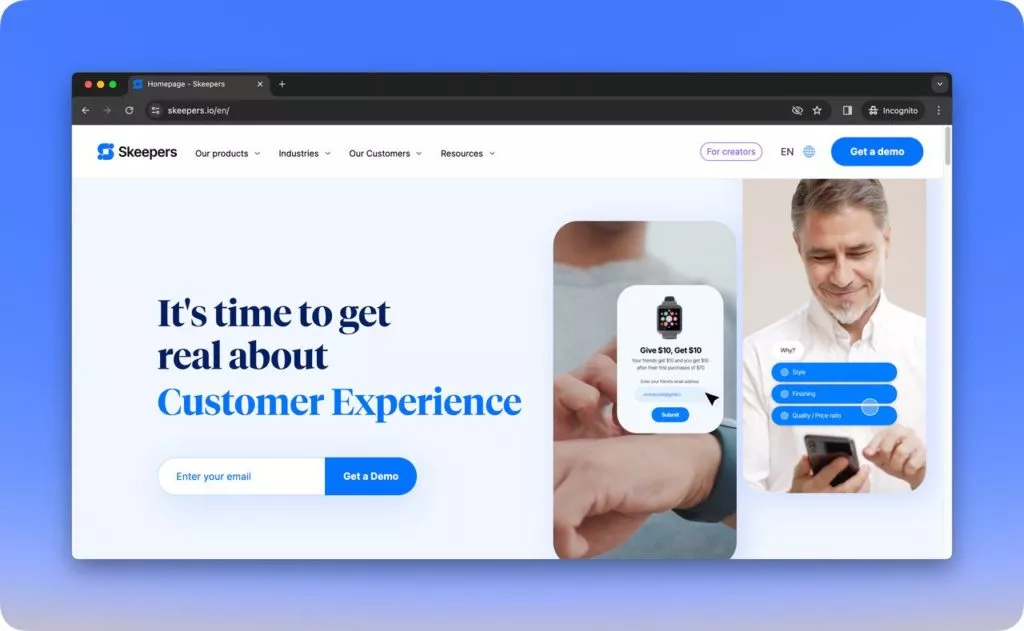
Skeepers offers a comprehensive UGC platform to foster collaboration between brands and content creators. It helps create authentic, engaging marketing campaigns that resonate with the audiences and drive tangible business outcomes.
Key Features of Skeepers:
- Enhanced Search Visibility: SEO/SEM integrations, including Seller Rating Stars and Rich Snippets, boost brand visibility in search engine results through Verified Reviews.
- Influencer Marketing: Access to a network of over 100,000 nano and micro-influencers.
- Ratings and Reviews: Enhances brand credibility, potentially driving a 58% increase in engagement.
- Live Shopping: Provides real-time customer interaction to enrich the shopping experience.
- Consumer Videos: Videos from brand ambassadors can double the add-to-cart rate and triple the conversion rate.
- Customer Data Enablement: AI-driven personalized marketing increases sales by 4% and enhances customer loyalty by four times.
Pros:
- Improves click-through rates by leveraging seller ratings on Google.
- Flexible billing options without the need for an annual contract.
- Continuous feature development, such as the Smart Data reporting dashboard, is well-received.
- Low subscription cost is advantageous for direct-to-consumer (D2C) business models.
Cons:
- Some users experience slow platform performance and login difficulties.
- The backend management user interface needs improvement, particularly for handling multiple domains.
- Development for specific e-commerce platforms, like Salesforce Commerce Cloud (SFCC), can be more efficient and cost-effective.
G2 Ratings & Reviews:
- Ease of Use: 9.4
- Quality of Support: 9.6
- Ease of Setup: 9.3
2. Trend.io
Ideal for: Budget-Conscious Brands Seeking a Wide Range of Creators
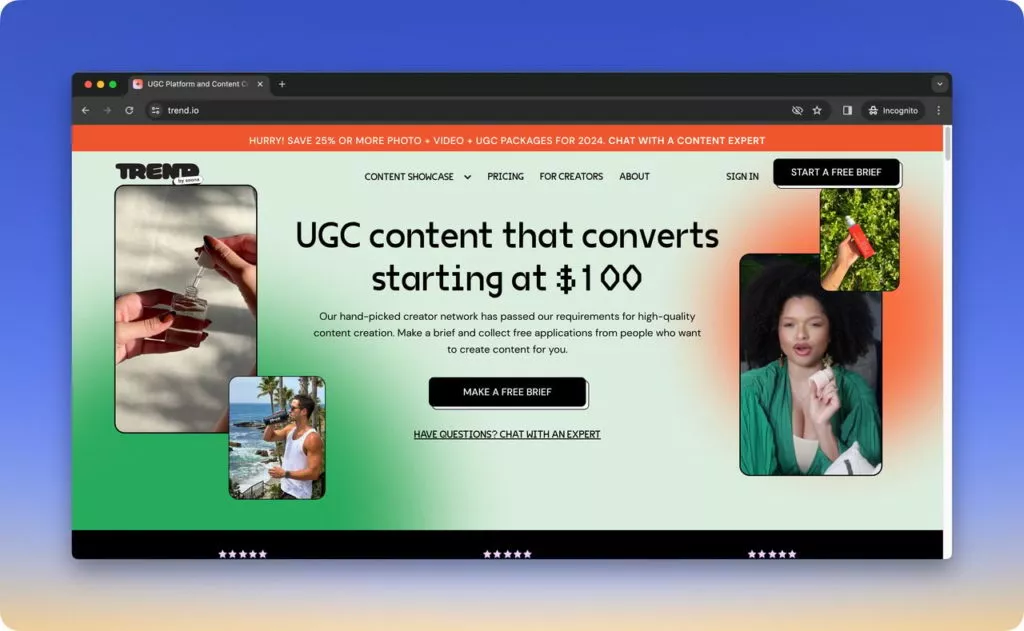
Trend.io is a versatile UGC platform that connects brands with a diverse network of over 3,700 vetted creators. It streamlines influencer marketing with a credit-based system, transparent pricing, and various content options to help brands create authentic UGC campaigns.
Key Features of Trend.io:
- Diverse Creator Network: Access a robust network of over 3,700 creators, offering a wide range of UGC.
- Customizable Content: Tailor content to meet specific marketing goals, from unboxing videos to lifestyle photography.
- No Creator Haggling: Set budgets for all projects, enabling seamless collaboration with multiple creators.
- Full Licensing and Distribution Rights: You will gain full rights to distribute UGC across social media, websites, ads, and other marketing channels.
- Transparent Credit System: Flexible credit system starting at $500, offering budget-friendly options.
Pros:
- Effectively connects brands with high-quality influencers.
- A credit-based system with no contractual obligations enhances budget management and transparency.
- Facilitates effective communication between brands and influencers with powerful tracking features.
- Offers a variety of content options, including photos and videos, for diversified marketing materials.
- Allows brands to tailor campaigns to specific interests and locations.
Cons:
- Some users seek more specific categories of influencers, such as those focused on healthy living or fitness.
- The application dashboard could be improved to provide more detailed information about influencers.
- Users desire more filtering options to simplify influencer selection.
G2 Ratings & Reviews:
- Ease of Use: 9.4
- Quality of Support: 9.3
- Ease of Setup: 9.6
3. Tagshop
Ideal for: Online Retailers and E-commerce Brands Seeking Social Commerce Integration

Tagshop is a versatile platform designed for e-commerce businesses, Shopify users, and companies aiming to boost customer engagement by integrating shoppable galleries with social media content.
Key Features of Tagshop:
- Shoppable Instagram Feed: Integrates Instagram feeds with online stores that feature shoppable product tags and visual content to drive sales.
- Hashtag UGC Integration: Utilizes UGC through hashtags to enhance social proof and increase sales, including a “Shop The Look” feature.
- Insightful Analytics: This service offers detailed performance insights, tracking metrics such as clicks, views, and engagement for shoppable galleries.
- Smart Content Curation & Product Tagging: Uses advanced machine learning for automated content filtering or smart product tagging.
- Visual Commerce Platform: Curates visual content from social media, allowing product tagging for shoppability.
Pros:
- Allows tagging and linking products within images, directly connecting showcased products with potential buyers.
- Supports email campaigns, helping businesses counter cart abandonment effectively with tools like Klaviyo and MailChimp.
- Introduces innovative features such as “Shop on bio” product page galleries and email campaigns, staying current with industry trends.
Cons:
- Some users need help navigating and understanding the platform’s functionality.
- Concerns may arise regarding the verification of user-generated reviews.
- Users express a desire for additional theme options for galleries.
G2 Ratings & Reviews:
- Ease of Use: 9.6
- Quality of Support: 9.9
- Ease of Setup: 9.2
4. Billo.app
Ideal for: Small to Midsize E-commerce Businesses Looking to Enhance Advertising Efforts
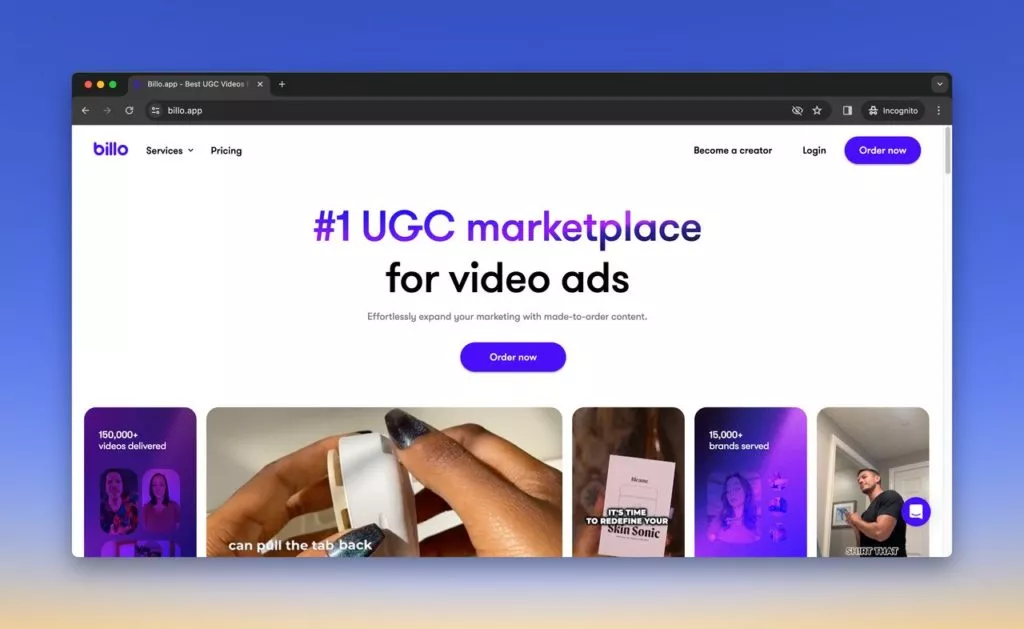
Billo specializes in creating high-quality user-generated content (UGC) for advertising campaigns, helping businesses drive clicks, boost conversions, and improve the Return on Ad Spend.
Key Features of Billo.app:
- Diverse Creator Selection: Access over 5,000 creators with demographics, styles, and interests, including niche categories.
- Efficient Content Production for A/B Testing: Rapid content delivery facilitates A/B testing to optimize ad performance.
- Direct Communication with Creators: The direct chat feature enables brands to communicate with creators for feedback, suggestions, and edits.
- Professional In-House Editing: In-house editing services enhance UGC quality, ensuring a professional finish.
- AI Storyboard Writer: AI technology assists in content creation, saving time and energy while facilitating quicker ad testing.
Pros:
- An easy-to-use platform for creating briefs.
- A diverse range of UGC options allows for experimentation with different formats.
- In-house editing services ensure professional and polished UGC videos.
- AI Storyboard Writer helps with content creation and speeds up ad testing.
Cons:
- Pricing can be relatively high.
- Limited diversity in video types; some content may appear too similar.
- Additional filtering options during the tagging process are desired.
Trustpilot Rating: 4.2 🌟
5. GRIN
Ideal for: Marketing Agencies and Brands Looking to Expand Their Reach through Influencers
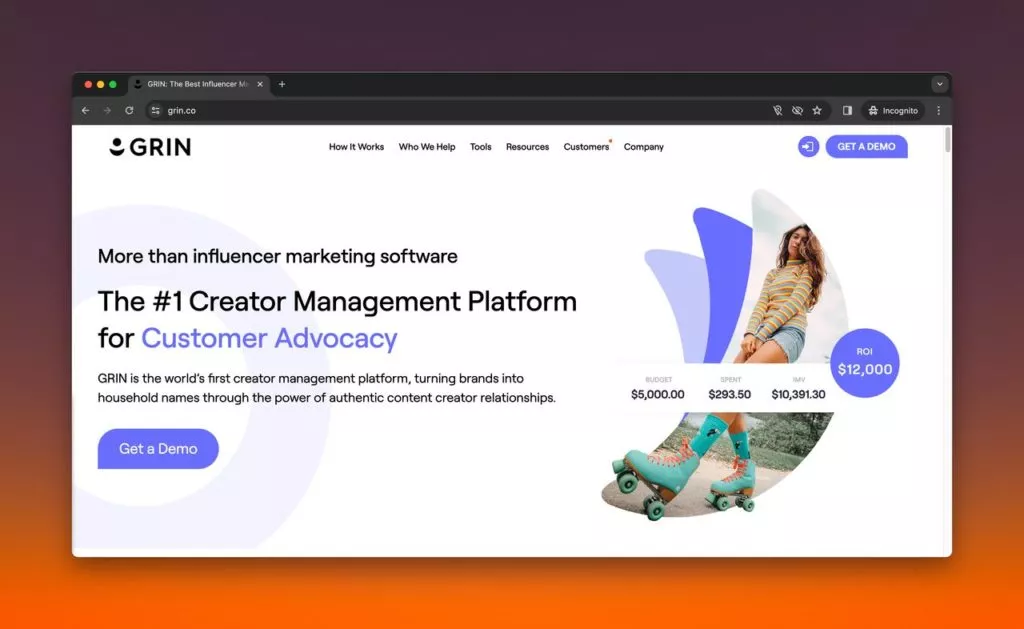
GRIN is a UGC platform designed for public relations and influencer marketing. It plans to turn brands into household names through authentic relationships with content creators and comprehensive campaign management tools.
Key Features of GRIN:
- Spreadsheet-Free System: Track and present ROI for every creator and campaign without spreadsheets.
- Efficient Product Seeding: Streamlines product seeding with compelling shipping features and e-commerce integrations.
- Creator Search and Web Extension: A robust search function for finding influencers is complemented by a web extension for organic discovery.
- Landing Pages and Social Listening: Personalized landing pages help collect information from interested creators, and social listening tools monitor brand mentions.
Pros:
- Contact tags for creator profiles make it easy to distinguish between segments.
- Easy payment and product shipping through Shopify connection.
- Customizable campaigns and the “Activations” feature enhance campaign customization.
Cons:
- Issues with updates due to new Meta (formerly Facebook) restrictions.
- There is a desire for better tools for setting up ambassador programs, seeding products, or creating rewards.
- It needs to be mobile-friendly.
G2 Ratings:
- Ease of Use: 8.6
- Quality of Support: 9.6
- Ease of Setup: 8.2
6. Cohley
Best for Brands Needing High-Quality Content Across Various Formats
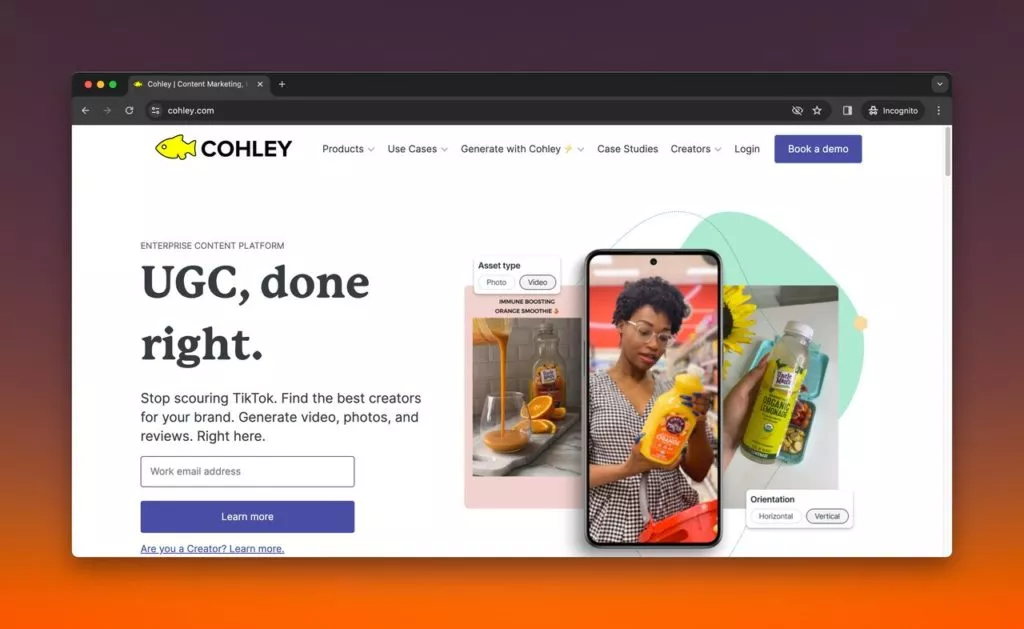
Cohley is a dynamic digital platform designed to help brands generate content like short-form videos, photography, or product reviews by connecting them with diverse creators. The platform offers unique features such as Creative Briefs for tailored content requests and seamless integration with marketing channels for effortless content activation.
Top Features of Cohley:
- AI-Powered Creative Briefs with Finn: Finn, the AI-powered assistant, ensures that the deliverables, timelines, and budgets are effectively communicated to creatives.
- Expert Support for Scaling Content: Provides expert services to help brands increase their content output efficiently.
- Customer Review Feature: The “Voice of the Shopper” feature uses genuine customer reviews to enhance authenticity.
- Integration with Major Platforms: Cohley integrates with prominent marketing and e-commerce platforms such as Shopify, BigCommerce, and Instagram.
Pros:
- Cohley is noted for its innovation and responsiveness to user feedback.
- It is particularly effective for products that are challenging to showcase visually.
- Facilitates the creation of high-quality content that enhances presence on social media, retail sites, and paid social.
Cons:
- Some problems arise from content creators needing to fit the campaign parameters.
- The qualification among creators can be inconsistent, leading to variable content quality.
Rating & Review on G2: 🌟
- Ease of Use: 9.0
- Quality of Support: 9.7
- Ease of Setup: 9.8
7. Taggbox UGC Suite
Best for SBMs and Large Businesses Seeking Extensive Customization for UGC Across Multiple Channels
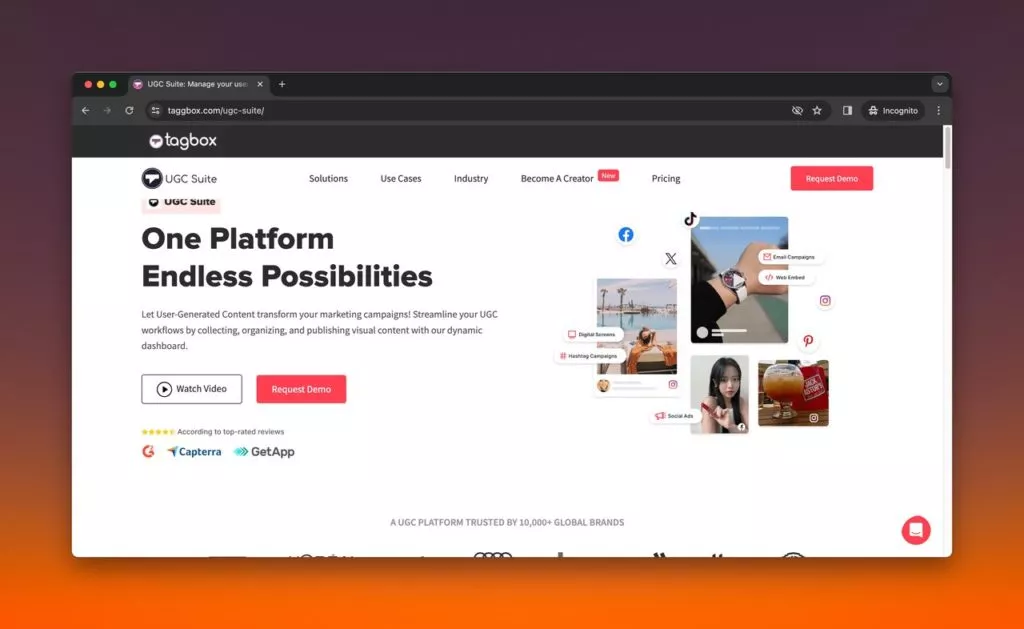
Taggbox is designed to help brands collect, manage, and even effectively use UGC. This platform aims to make it easier for businesses to showcase their authentic customer experiences and stories across their marketing channels.
Top Features of Taggbox UGC Suite:
- Comprehensive UGC Collection: Collects UGC from over 20 platforms.
- Repurposing Influencer Content: Allows repurposing organic influencer content across different channels.
- ROI Calculator: This section includes an ROI calculator to estimate the value of visual content in terms of business and brand metrics.
- Smart Tagging and Easy Asset Search: AI is used for intelligent tagging or easy asset search, streamlining content organization.
- UGC Management and Storage: Offers advanced tools for content moderation, rule creation, tagging, and organization.
Pros:
- The rights management tool efficiently obtains permission to use user-generated content.
- Integrates with digital platforms and stores.
- The UGC analytics feature offers valuable insights into campaign performance and optimizing marketing strategies.
- Versatile enough to enhance various marketing efforts, from events to email campaigns.
Cons:
- Some users need help connecting with some social networks, like Instagram.
- There is a need for more varied pricing alternatives to cater to different business sizes and budgets.
Rating & Review on G2: 🌟🥇
- Ease of Use: 9.8
- Quality of Support: 9.8
- Ease of Setup: 9.4
Factors to Consider Before Choosing a UGC Platform:
- Identify Your Goals: Define your objectives, whether it’s enhancing your social media presence, improving SEO, or driving sales through authentic reviews.
- Know Your Audience: Understand your target audience’s demographics and platform preferences to choose the most suitable UGC platform.
- Budget Considerations: Align your goals with budget constraints, assessing the ROI of potential platforms.
- Ease of Use: Opt for platforms with user-friendly interfaces to ensure a smooth experience.
- Integration Capabilities: Check if the platform seamlessly integrates with existing marketing tools, websites, or CRM systems.
- Trial Runs: Utilize free trials whenever possible to gauge if the platform aligns with your brand’s needs.
Conclusion:
UGC platforms are a transformative force for brands, offering a range of benefits that enhance digital presence, customer engagement, and overall marketing effectiveness. By understanding and leveraging these advantages, brands can create more meaningful connections with their audiences and drive sustained growth.
FAQs on UGC Platforms:
What’s the Easiest Way to Collect UGC?
- Encourage social media sharing with specific hashtags.
- Engage in contests on social channels.
- Simplify website content submissions.
- Appreciate and recognize contributors.
- Incentivize participation with rewards.
User-Generated Content vs. Influencer Marketing – What is the Difference?
- User-Generated Content: Created by users about products or services, offering authentic and organic engagement.
- Influencer Marketing: Collaborates with influencers who have a significant following to create controlled and strategic content.
How Many Followers Do I Need for UGC?
UGC thrives on authenticity; there’s no specific follower count requirement. Every genuine post contributes value, regardless of the user’s follower count.



